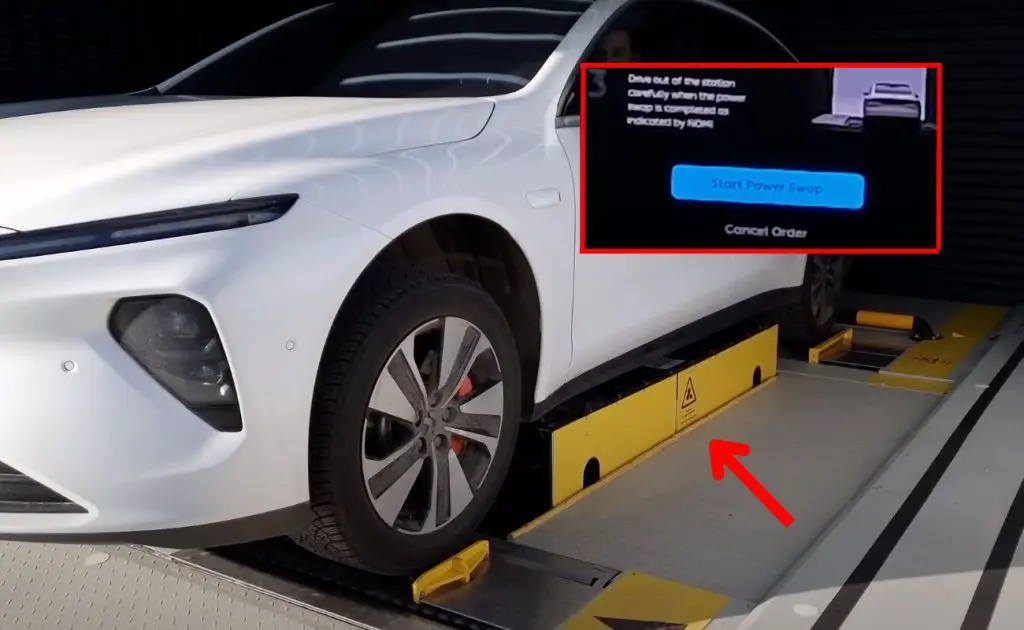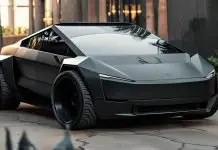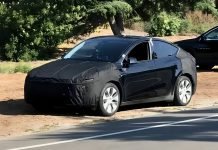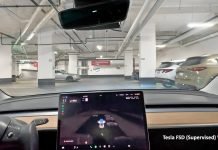As the popularity of electric vehicles continues to grow, one of the biggest concerns for drivers is how to keep their batteries charged when on a long road trip. The options of battery swapping and charging stations have helped alleviate some of these concerns, but which option is better?
Tesla boasts its supercharging network to be the best and Nio’s latest penetration in battery swapping stations is overwhelming as well. YouTuber It’s Only Electric goes a step ahead to test the best in-segment EVs on battery swapping and supercharging.
In a thrilling electric race spanning 500km between Stockholm and Gothenburg, two electric vehicles will go head-to-head to determine which charging technology reigns supreme. The Nio ET7 and Tesla Model Y Performance will battle it out, with one utilizing fast charging on a Tesla Super Charger and the other utilizing the Nio Battery Swap Station.
The question on everyone’s mind is who will come out on top and reach Gothenburg first? This exciting race will put both electric vehicles and their charging technologies to the test, showcasing the strengths and weaknesses of each.
In this article, we’ll take a closer look at two popular electric vehicles – the Tesla Model Y and the Nio ET and compare their battery swapping and supercharging capabilities. By the end, you’ll have a better understanding of which option is best for your next road trip.
Table of Contents
Tesla Model Y Vs Nio ET7
Electric vehicles (EVs) are becoming increasingly popular, as more and more people become aware of the environmental benefits of driving electric. However, one of the biggest challenges facing EV adoption is range anxiety. Range anxiety is the fear that an EV will run out of battery power before reaching its destination.
There are two main ways to address range anxiety: battery swapping and supercharging. Battery swapping is a process where a depleted EV battery is quickly replaced with a fully charged battery. Supercharging is a process where an EV battery is charged to a high level of power in a short amount of time.
YouTuber with the channel It’s Only Electric came forward to help address the issue with a comparison test in both leading cars Nio ET7 and the most popular Tesla Model Y. The YouTuber and his brother both take part in the 485 km race between Stockholm and Gothenburg to find out the better option.
Both drive along the long route keeping two rules in check to do the charging test:
- Stick to speed limits.
- Track time and exclude any additional pauses.
Charging Race between Battery Swapping Tech and Charging Station
The journey begins in two cars, one Tesla Model Y and one NIO. They are traveling to Gothenburg, which is around 500 kilometers away. Both cars need to make a stop for charging or battery swapping.
The brother driving the Model Y plans to stop at a Supercharger V3 station in Jönköping, which offers a peak power of 250 kW. The estimated state of charge upon arrival is five percent. The NIO needs a battery swap and plans to do it at a swap station in Mantorp, which is approximately 250 kilometers away.
The YouTuber checks the status of the NIO and confirms a state of charge of 435 kilometers. As they continue their journey, the estimated time left is four hours and 40 minutes. The drivers discuss their preferences for charging and swapping, with one favoring charging and the other being impressed with the NIO swap station.
The Tesla Model Y was charged to 97%, while the NIO was not fully charged due to time constraints. The reason for charging the Tesla more is that it has a smaller battery and lower WLTP range.
They discuss the differences in consumption and range between the cars, with the NIO having a slightly higher consumption. The consumption efficiency is eating up the difference in battery size. The YouTuber enjoys the dynamic massage option while on the go as well which Tesla lacks.
During the drive, they talk about the weather, climate control, autopilot nagging, and heat pumps, and even have some light-hearted conversations with the voice assistant NOOMI in the car. They check in with each other, and the NIO driver is almost at the charging station, aiming to arrive with a low state of charge for faster charging.

The YouTuber driving the NIO ET7 reaches the battery swap station and describes the process. The car parks itself, the swap begins, and the car is lifted for the swap to take place. The YouTuber mentions the squeaking and banging sound while in the process to swap.
After a few minutes, the swap is completed, and the car is ready to drive again with a significant increase in range. The whole swap process takes around eight minutes.
Both drivers discuss the efficiency and convenience of swapping versus fast charging. They mention the newness of battery swapping in Europe, with only a few stations available. The YouTuber driving NIO continues the journey, hoping to beat the charging time of the Tesla.
The Verdict
Nio Battery Swapping beats Tesla Supercharging!
The YouTuber arrives a bit earlier than the brother driving the Tesla Model Y covering a total of 482 km, and the total time for the Tesla was 5 hours and 17 minutes. In contrast, the NIO clocked in at five hours and 12 minutes.
The difference in time was primarily due to charging. The Tesla took 12 minutes and 25 seconds to charge, while the NIO only required 8 minutes and 5 seconds for a battery swap.
The NIO was four minutes and 20 seconds faster, highlighting the time-saving advantage of battery swapping during a nearly 500 km trip. However, Nio battery consumption clocked in at 204Wh/km and Model Y Performance did slightly better with 188Wh/km.
However, at the end of the journey, Nio ET7 still had around 93 miles or 150 km range left while Tesla had only 12 miles.
Comparatively, a gas car would only save eight minutes for the entire journey. This demonstrates the efficiency of electric cars and the potential time benefits they offer, even with a brief stop of just eight minutes. The YouTuber concludes the charging test video by pointing out how impressive owning an EV at the current time saying always stay electric.
Battery Swapping vs. Charging Station
Nio and Tesla are two of the leading EV manufacturers that offer battery swapping and supercharging services. Nio has a network of battery-swapping stations across China, while Tesla has a network of Supercharger stations around the world.
So, which is better: battery swapping or supercharging? There are pros and cons to both systems.
Advantages and Disadvantages of Battery Swapping
Pros
- Can be much faster than supercharging
- Can be done while the driver is not in the car
- Does not require the driver to park in a specific spot
Cons
- Requires a network of battery-swapping stations
- Can be more expensive than supercharging
- May not be available in all areas
Advantages and Disadvantages of Charging Station (Supercharging)
Pros
- Can be found in more areas than battery-swapping stations
- Can be less expensive than battery swapping
- Does not require a network of battery-swapping stations
Cons
- Can take longer than battery swapping
- Requires the driver to park in a specific spot
- Can be inconvenient if the Supercharger station is full
Ultimately, the best way to charge an EV depends on the individual driver’s needs and preferences. If range anxiety is a major concern, then battery swapping may be the better option. However, if cost is a major concern, then supercharging may be the better option.
It is also important to note that both battery swapping and supercharging are still evolving technologies. As technology continues to improve, both systems will likely become faster, more efficient, and more affordable.
Why Are NIO Owners Preferring Battery Swapping Over Charging?
NIO, a Chinese manufacturer of premium electric vehicles, has been making headlines recently with its innovative battery-swapping technology.
In a recent announcement, the company reported that 60% of its users have opted for its Power Swap Stations, which allow for a quick and convenient battery swap while on the road. This comes as no surprise given that NIO has achieved the impressive milestone of 10 billion kilometers driven by its users in just under 5 years since its launch.
The increase in demand for the Power Swap Stations is a testament to their effectiveness and convenience for NIO’s customers, both in China and Europe. As the world shifts towards electric vehicles, it’s exciting to see companies like NIO leading the way with their cutting-edge technology and commitment to sustainability.
NIO’s Future Plans
NIO, an up-and-coming Chinese electric vehicle manufacturer, has made significant strides since its inception. With over 320,000 vehicles currently on the road, NIO has transitioned from a nascent manufacturer to a well-established OEM, with products available in six countries and set to expand to 25 countries by 2025. NIO’s cutting-edge “Smart System” – the latest iteration of which is called Banyan – is constantly evolving.
This system enables NIO to enhance its services and features in response to user feedback, ensuring a constantly improving user experience for its customers. With its innovative technology and customer-centric approach, NIO is poised to make a significant impact in the electric vehicle market in the coming years.
The European Union (EU) has set an ambitious target of having 30 million zero-emission electric vehicles (EVs) on its roads by 2030. To achieve this goal and further promote sustainable transportation, the EU plans to implement a ban on the sale of new petrol and diesel cars from 2035. However, one major hurdle preventing a faster transition to EVs is the long charging times associated with them.
Bottomline
Many potential EV drivers find the wait for batteries to charge inconvenient and off-putting. Fortunately, advancements in technology are paving the way for a future where lengthy charging times will no longer be a concern.
As innovation and research progress, the development of faster charging solutions is becoming increasingly feasible, bringing us closer to a time when waiting for batteries to charge becomes a thing of the past. This breakthrough will be pivotal in encouraging more drivers to make the switch to EVs and accelerating the transition to a greener, more sustainable transportation system.
Battery Swapping is still getting out there and the Tesla network is world-renowned for its efficacy. However, battery-swapping technology, as demonstrated by the NIO and its efficient network, is gaining recognition. The Tesla network also contributes to the evolution of charging infrastructure. As these technologies continue to advance, they provide promising alternatives and further enhance the appeal of electric vehicles for drivers worldwide.
What would you prefer though? Swapping or Supercharging for your road trip plans?



















Charging doesn’t require you to be in the car and how is “parking in a specific spot or the stations being full” a con for supercharging vs battery swapping when it’d be the same the swapping?